Bob Barton: Long serving Fire & Rescue NSW Inspector retires after 40 years
Bob Barton joined the fireys when he was just 18 back when they still wore woollen pants and brass buttons. Now the veteran firefighter is retiring after four decades. Read his story here.
Central Coast
Don't miss out on the headlines from Central Coast. Followed categories will be added to My News.
Second generation firefighter Inspector Bob Barton was given a guard of honour as he finished up his last shift at Kariong Fire Station ahead of his official retirement on September 26.
It was a fitting tribute to a man who had devoted his entire 41-year career to battling blazes, preventing tragedies and saving lives.
“My dad was a station officer, it was in the family,” he said of his decision to join what is now known as Fire & Rescue NSW on September 4, 1981.
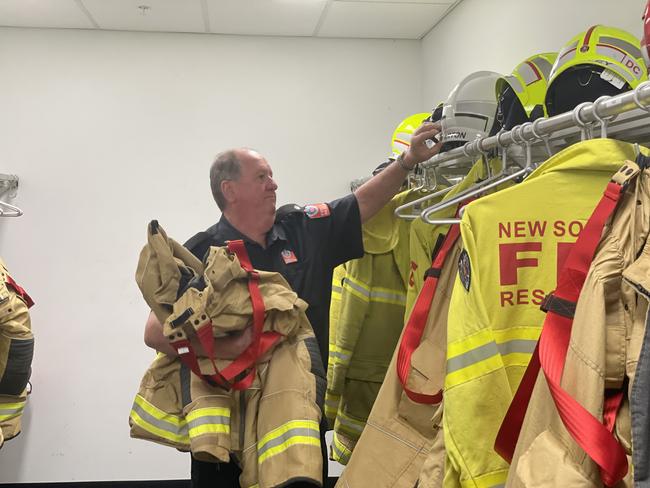
His family had moved to the Central Coast when he was about 13 and his dad was the station officer at Gosford.
The then teenager celebrated his 19th birthday at the old fire training college at Alexandria.
In use since 1974, the old Alexandria college consisted of a rudimentary seven story concrete tower, which instructors would set on fire, as trainees would try and fight the flames with hoses, sprinklers and ladders.
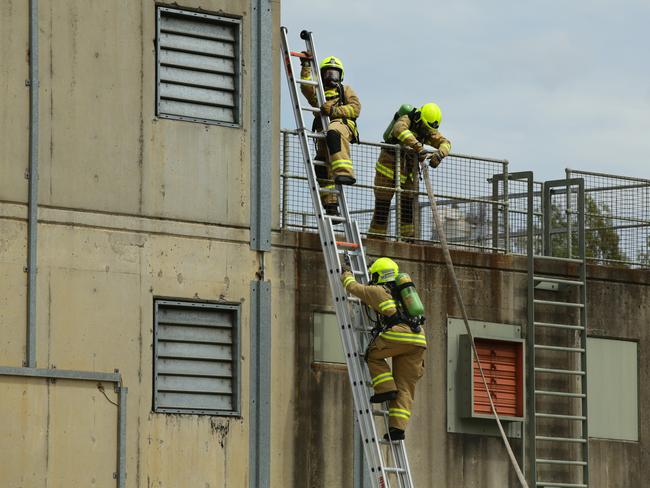
These days trainee firefighters are presented with a myriad of scenarios at the new $80 million Orchard Hills training facility from downed aeroplanes, multi-story building fires, to mock house and smoke scenes.
“It’s really come a long way,” Insp Barton said.
“It was pretty basic when I started.”
When Insp Barton started there was just one permanent fire station on the coast at Gosford where firefighters would physically answer the Triple 0 calls.
Just three station officers were based on the coast, with the other two located at Woy Woy and The Entrance.
Today there are eight permanent stations with seven retained stations on the coast and three more having a mix of both permanent and retained firefighters at Umina Beach, Kariong and Doyalson.
After college Insp Barton joined what was then known as “headquarters” at Castlereagh St, Sydney, from 1981 before joining Crows Nest in 1986 where he became station officer in 1997.
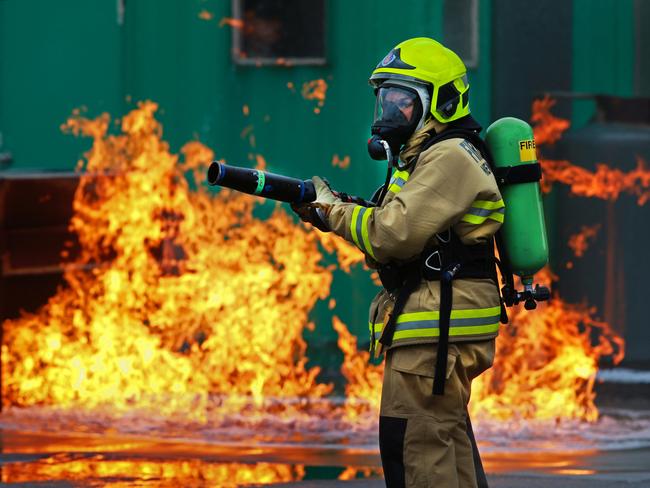
Insp Barton sat the inspectors exam in 1999 and was transferred to Lane Cove before gaining a posting on the Central Coast in 2001 in what was then known as the North 7 Zone.
“I commuted the whole time,” he said.
That first year on the coast was quite literally a “baptism of fire” for the new inspector with huge blaze tearing through Spencer and Gunderman on the Hawkesbury River.
At its height more than 100 fires were burning during what was dubbed the “Black Christmas Bushfires” which began on December 24, 2001, and destroyed 109 houses.
Bushfires were a common occurrence throughout Insp Barton’s career where he was an incident manager for part of the massive Gosper Mountain fire in October 2019 and the Glen Innes blaze a month later in November.
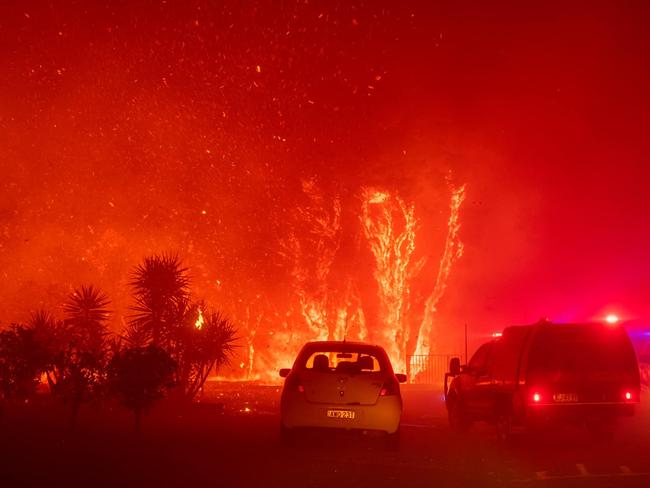
More recently he was on duty when a massive fire erupted on New Year’s Eve at Charmhaven and tore through 400ha before a southerly swept up the coast and really made things interesting.
“You couldn’t see for the smoke,” Insp Barton recalled.
“How we never lost a house that night I will never know.”
While most fires are forgotten pretty much as soon as they are put out — an invaluable coping mechanism the veteran firefighter developed early in his career — some have stayed with the inspector for a variety of reasons.
One such fire, which started in the early hours of June 9, 2005, in the downstairs level of a fibro home on Panonia Rd, Wyong, is regarded as one of the worst on the coast in living memory.
Three boys — aged 15 months, two years and seven years — along with a seven year old girl perished in the blaze while three older girls aged 12 and 13 escaped by jumping off a veranda or from a first storey window.
Their parents, meanwhile, were down the street and across the road at Wyong Bowling Club watching the Anthony Mundine-Mikkel Kessler fight.
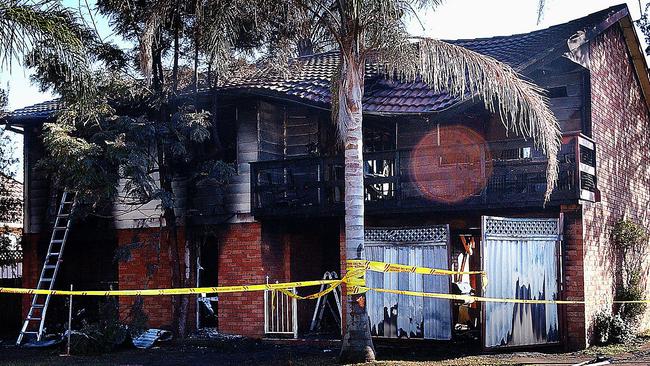
Insp Barton said house fires, inevitably, turned out tragic even if everyone escaped alive.
“When you turn up and the people are out and you find out they don’t have insurance it’s devastating,” he said.
“Even if you’re renting you should have contents insurance. It’s even more devastating when it could have been prevented with a smoke alarm.”
The role of a firefighter has changed significantly in the past four decades, which for Insp Barton really began in 1989 with the formation of the then State Rescue Board.
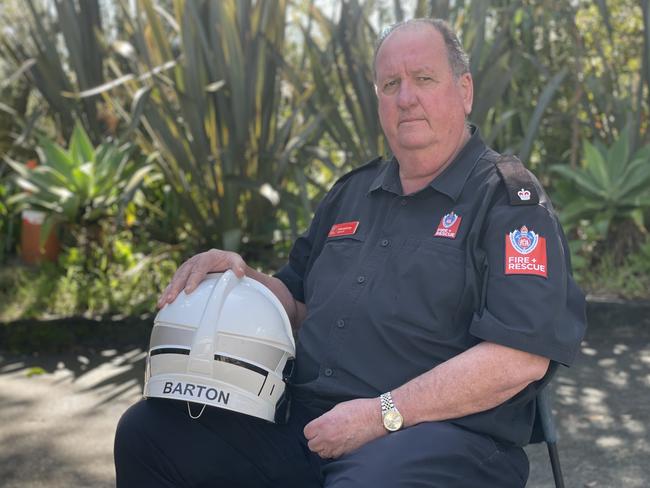
Insp Barton was at Crows Nest at the time and became trained in rescue, which saw him attend motor vehicle and industrial accidents, cliff rescues and people stuck on trains.
Back then fire fighters wore woollen pants tucked into leather boots, jackets with brass buttons and fibreglass helmets.
Insp Barton said the evolution of personal protective equipment (PPE) meant “you don’t have to take your gloves off to speak on the radio anymore” while helmets were now fitted with microphones and speakers, and breathing apparatus allowed firefighters to enter buildings without being overcome by the choking, sometimes fatal, smoke.
It is an evolution Insp Barton said showed no sign of slowing down with drones and thermal imaging cameras the latest in a firefighters’ arsenal.





